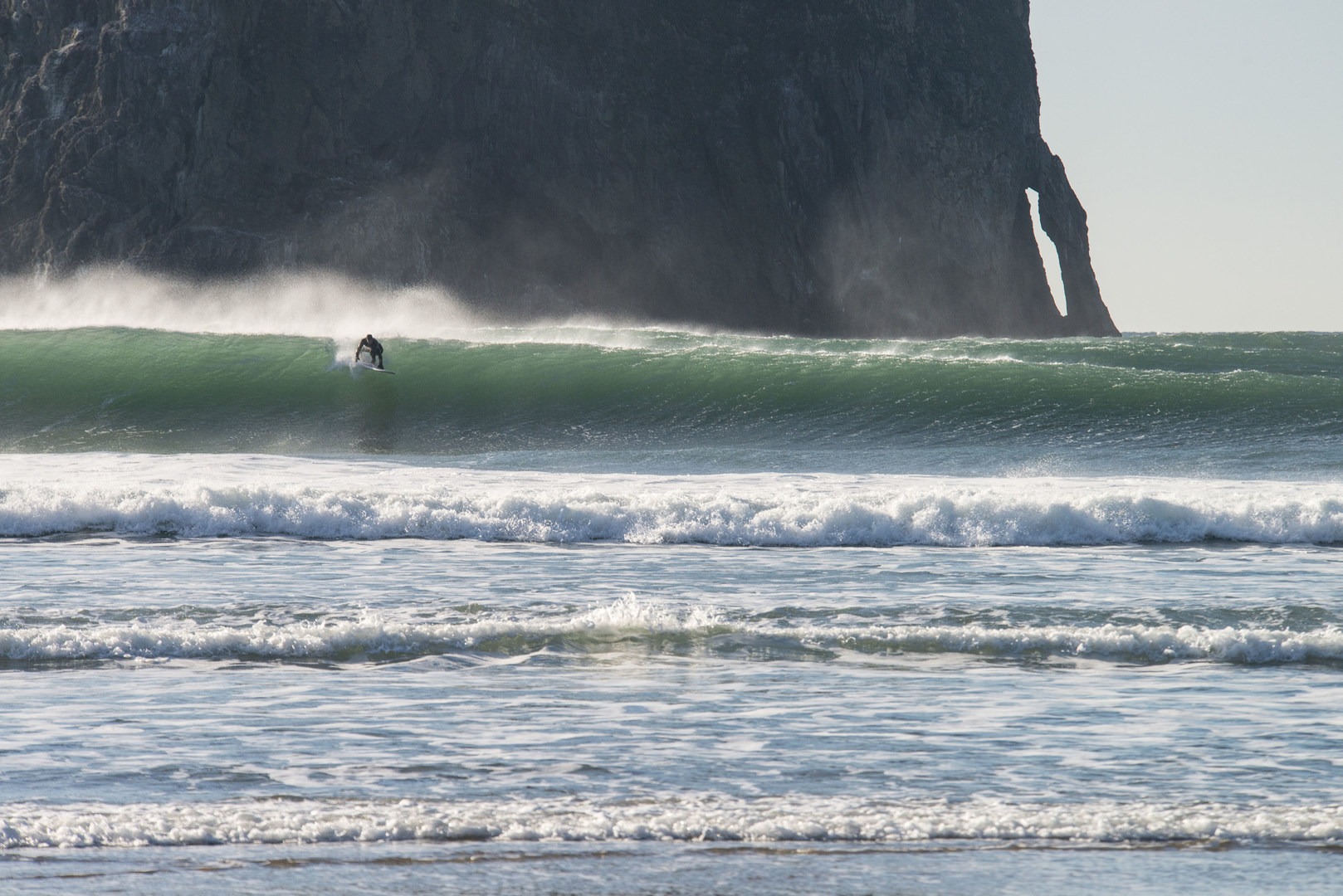Since the turn of the 20th century, Pacific City* has been a major draw for tourists and vacationers in Oregon who are attracted to the big surf, the iconic Cape Kiwanda, Bob Straub State Park, fishing and paddling on Nestucca Bay, and the relaxed atmosphere so prevalent on the Oregon coast.
The estuary and lowlands of the Nestucca River were first settled by the Nestugga tribe of Native Americans, who harvested the bounty of salmon. European settlers began to occupy the Tillamook Valley just to the north by 1854, and in 1876 the tribe's roughly 200 people were moved to reservations on the Salmon and Siletz Rivers to the south. Ten years later the Linewebber and Brown cannery was founded, along with other fishing operations, with production that resulted in 12,000 cans of salmon harvested from the Nestucca Bay. Commercial fishing had completely wiped out the bay's bounty by 1926, forcing fisherman to take to the open ocean. Instead of establishing a marina within the Nestucca Bay, the local fisherman chose beach-launched dories to chase their catch, and although commercial fishing via dories has nearly come to a complete halt in Pacific City, it remains the town's most well-recognized tradition. Today you can still see recreational dories launched on the beach from time-to-time, which is why driving is still allowed on the beach. Unfortunately, in an effort to keep the tradition alive by permitting motor vehicles on the beach, the ocean sands often resemble a parking lot more than a wild and scenic seashore.
While historically the Nestucca Bay was the heart of this coastal town, the recreational hub has moved to the grouping of the Pelican Pub, the adjacent grocery market, and the Inn at Cape Kiwanda. Here the beer flows up to the rafters, and it is only a short walk to the sandy dunes of Cape Kiwanda. For the surfers, Pacific City has slowly built a name for itself as a surfing destination, and winter swells that break over the reef can easily create waves that measure over 12 feet. Nice right hand waves are known to break off Cape Kiwanda's southern end, peeling into the beach on clean west swells. The cape also provides protection from NW winds. A much larger beach break known as Gas Chambers further south gets hollow and can pack a punch at low tide.
* Interestingly, the Pacific City was originally called Ocean Park when it was planned by Thomas Maleny in 1893. By 1909, however, the name was changed to Pacific City to avoid confusion with Ocean Park, Washington, located on the Long Beach Peninsula.

























Comments
Sign In and share them.